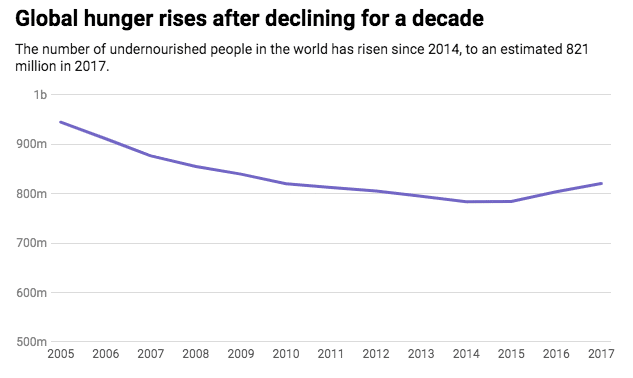China and the United States are the two largest emitters and biggest economies in the world, so their every move is essential to mitigating the climate crisis. In a time of unprecedented diplomatic lows, US President Joe Biden and Chinese President Xi Jinping attended a virtual summit on November 15th, agreeing that their nations should work together on climate change mitigation. However, it’s questionable whether China can fulfill its climate promises due to a low national reputation in recent years. Similarly, it is unclear if the US can really achieve strong climate commitments due to internal political struggles. Will diplomatic lows stop China and the US from working together on climate change mitigation?
—
Shared Interests
On 15-16 April 2021, US Special Presidential Envoy for Climate John Kerry and China Special Envoy for Climate Change Xie Zhenhua held a diplomatic meeting in Shanghai to discuss climate change and mitigation. Despite historically low diplomatic relations, both countries published a joint statement to consider themselves in the same boat in terms of climate change-related threats, which threaten global socio-economic development and survival.
Although the countries issued a joint statement, the global community has criticised their climate policies as still insufficient and inadequate. According to the Climate Action Tracker, China’s Nationally Determined Contribution (NDC) rating is “highly insufficient” while the US’s NDC rating is “critically insufficient”. As such, the rating reflects that their current situation and plans are not consistent with limiting temperature to below 2°C, which scientists say is needed to avoid a climate catastrophe.
Even though China and the United States’s climate policies have come under fire, both countries’ fortunes would be deeply affected by a warmer world. For example, more than 80,000km² of China’s agricultural and underdeveloped land is lower than five metres above sea level, so this vast region is highly vulnerable to sea level rise and flooding due to extreme weather. What’s more, parts of southeastern China and the Yangtze River Valley region, which is home to the majority of China’s population, will also suffer from unpredictable thunderstorms and flooding.
Similarly, more than 90,000 km² of the US’s rural land also lies lower than five metres above sea level and the Southeast region, especially the state of Florida, is exposed to imminent flooding and a high frequency of tropical cyclones during the Atlantic hurricane season. In brief, both countries’ livelihoods and inhabitants are under similar exposure to severe flooding and extreme weather in spite of differing geographies. It is in the shared interests of both countries to safeguard their national security by climate change mitigation.
Climate change threatens the economic stability of both countries. Both China and the United States have to sort out potential impacts of grain production due to the severity of extreme weather events. In China, climate change-driven seasonal drought might result in substantial losses of approximately 8% by 2030 so the total production of rice, wheat and corn will potentially decrease despite adaptation of water-saving techniques. The production of corn yield will drop nearly 20%, wheat will drop at least 4% and rice will drop around 1.5% according to a study by the International Food Production Research Institute.
There has been a similar reduction in grain production across the US in recent years. For example, the states of Iowa, Illinois and Indiana have all had lower corn yields even though the northwest region is witnessing increased production. Soybean production has also moved from the south and east parts of the US to the north and west. What’s more, climate change has reduced overall yields of other important crops, such as wheat and barley. In other words, the reduction of crop production will definitely affect food security across the globe as the US is the largest agricultural exporter and China is the world’s largest agricultural importer with imports totalling USD$133.1 billion.
In short, climate change can induce and exacerbate food shortages and famines across the world. At this stage, both China and the US should work together to avoid imminent food shortages or millions of people will unfortunately suffer in the end, given the outsized role of the two countries in meeting global food supply.

Economic Incentive
Given the current diplomatic lows of both countries, technology sharing is a touchy subject. The US would hardly be willing to share pivotal technology with China, which would further accelerate its rival’s rise and challenge its own global hegemonic power. Furthermore, the ongoing Sino-American trade war may impede any trading agreement even though they are in the same boat when it comes to dealing with climate change. In short, it’s questionable whether China and the United States can work together without other complicated political calculations or economic competition.
Despite the uncertainty of bilateral cooperation, US-China cooperation remains critical to achieving important climate outcomes. As the world’s two largest economies, and two largest emitters, their affluence and advanced technology can accelerate the transition of renewable energy for the rest of the planet. What’s more, both countries have massive international sway, and cooperation could help guide the rest of the world’s transition towards a net-zero economy.
However, vested interests such as the American petroleum industry are not willing to witness this bilateral cooperation in the environmental realm, as it may encroach on their economic benefits. In other words, the role of the US is significant and must be cautious because they have to balance both environmental commitment and domestic vested interest at the same time.
But from an economic standpoint, there are several reasons as to why the US and China should cooperate more on climate. Firstly, China has a flourishing renewable industry within the domestic renewable market due to a cheaper electricity price in the midst of a severe commercial competition in China. In particular, the average cost of electricity produced by a Chinese solar farm has fallen at least 80% in the previous decade. Meanwhile, average wind power prices also dropped by at least a third. Both renewable prices are cheaper than existing coal power plants. In this circumstance, the US can possibly cooperate with China in terms of sharing commercial and governmental experience to further low their electricity price with the use of renewable energy.
Secondly, the US can purchase cheap photovoltaic modules, large-scale wind power equipment, key components for electric vehicles and networking systems from China. China aims to triple it’s solar and wind power capacities to over 1,200 GW by 2030 compared to the 2019 installed capacity of 415 GW for a mitigation of around 150 million metric tonnes of carbon. This implies that China has a mature manufacturing sector with a relatively cheap labour cost to support its national goal. If the US imports cheap renewable components from China, the acceleration of adopting full-scale renewable energy can be achieved with less cost and high efficiency. Yet, they have to resolve ongoing trade disputes or a bilateral cooperation cannot be achieved whatsoever.
You might also like: Is Climate Change Reshaping The Future of International Diplomacy?
Political and Geopolitical Obstacles
Climate change mitigation is not a separate international issue because it intersects with countless national and commercial interests. All international affairs are intertwined with each other, so climate negotiation highly relates to diplomatic relationships and waves of negotiations among countries.
Diplomatic tension between China and the United States is extremely high in recent years because of military contestation, technological competition, human right issues, and ideological opposition. Although these realms have no direct relationship to climate change, it reveals that both countries may prefer to work alone rather than collaborate.
In the recent UN climate change summit in Glasgow (COP 26), President Biden criticised President Xi for not showing up to the conference, adding that the country has “lost an ability to influence people around the world and all the people here at COP.” The Chinese COP delegate responded that “China is not only a serious and responsible participant, it’s also taking real action.” China had successfully slashed over 120 million kilowatts of coal power capacity, which is equivalent to the total capacity of the United Kingdom. In this sense, both countries have inadequate environmental conservation or direct dialogue as it seems that President Biden does not fully understand the mitigation performance in China.
Nonetheless, there is hope to witness a rare collaboration between China and the United States as climate change issues can possibly create non-economic opportunities. As for the US, President Biden noticed that “green development” is a national consensus during a time of extreme socio-political division within the country. Meanwhile, China is eager to eliminate greenhouse gas emissions in order to satisfy their national demands and present themselves as a responsible superpower. Both countries have their internal incentive to work together, albeit a massive diplomatic disagreement.
This article maintains an optimistic point of view regarding the prospects of Sino-American potential collaboration to tackle climate change. Even though both countries have experienced unprecedented diplomatic lows in recent years, they also admit tackling the imminent climate crisis is of common interest. Climate change has no geographical boundaries but impacts both countries’ livelihood and future prospects. In other words, both countries are in the same boat so they have to eventually collaborate with each other.
However, the United States may impede the entire progress by not readily offering technology transfer to China in exchange for cheap components to install renewable energy’s facilities. Moreover, the climate crisis is another platform for both countries to strive for stronger discursive power in the international realm. On the bright side, both countries’ domestic circumstances give incentives to work together in order to satisfy their internal demands and desires. Climate change issues may even become a turning point of Sino-American relationship as the aforementioned joint statement and a consensus of environmental cooperation after the Sino-American virtual summit have shown their willingness to collaborate with each other.


















